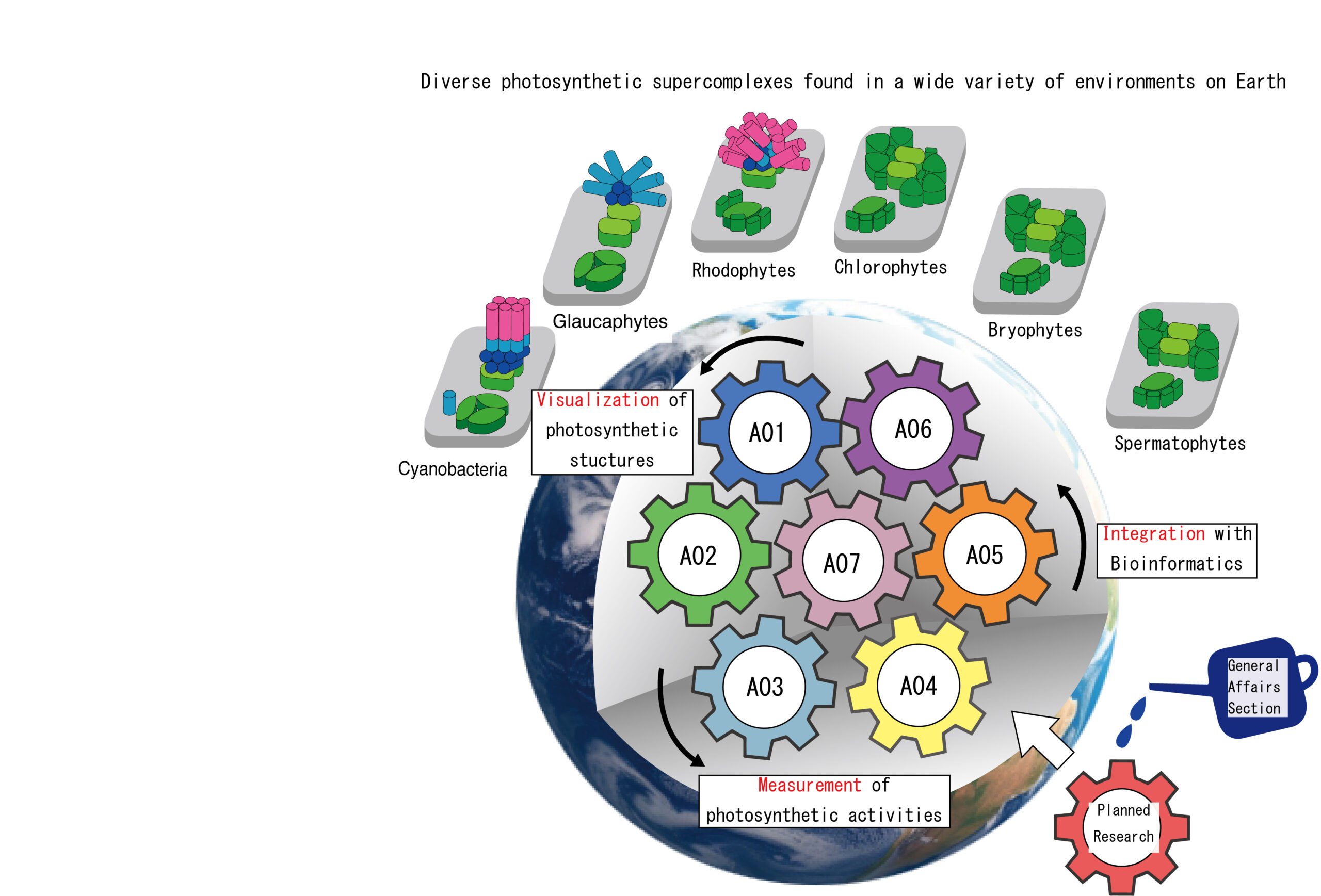
Area Vision
Entire Area
Photosynthetic organisms have expanded into every environment on Earth, from the tropics to the polar regions. This “ability to perform photosynthesis anywhere on earth (= photosynthetic ubiquity)” is thought to be made possible by the environmental adaptation of photosynthetic supramolecules that respond to the ever-changing harsh light conditions. This research area aims to understand the principle of environmental adaptation of photosynthesis, and the planned research from A01 to A07, publicly solicited research to be participated in in the future, and the general team that supports the collaboration of the area will work closely together to conduct research.

In order to understand the environmental responses of photosynthetic supramolecules that occur at different spatiotemporal scales, we will promote the following research projects (A01 ~A07), in which researchers specializing in (1) structural visualization technology using cryo-EM structural analysis, NMR, high-speed AFM, molecular science calculations, etc. (= technology to visualize), (2) analysis technology related to photosynthetic functions such as electron transfer, energy transfer, and mass spectrometry (= technology to measure), (3) comparative (3) Information analysis technology using comparative genome analysis, structure prediction, machine learning, etc. (= technology to integrate). Researchers with these technologies will work closely within and between groups to elucidate photosynthetic ubiquity by “observing, measuring, and connecting” various photosynthetic supramolecules.


